VIGO DI FASSA, 1600 METERS ABOVE SEA LEVEL: A STABLE, A SMALL DAIRY, A CHARMING AGRITOURISM. TECHNOLOGY AND TRADITION, ENTRAPRENEURSHIP AND ANIMAL WELFARE, VISION AND RESPECT FOR THE ENVIRONMENT: THERE ARE THE INGREDIENTS THAT MADE US FALL IN LOVE WITH CASEIFICIO CATINACCIO!
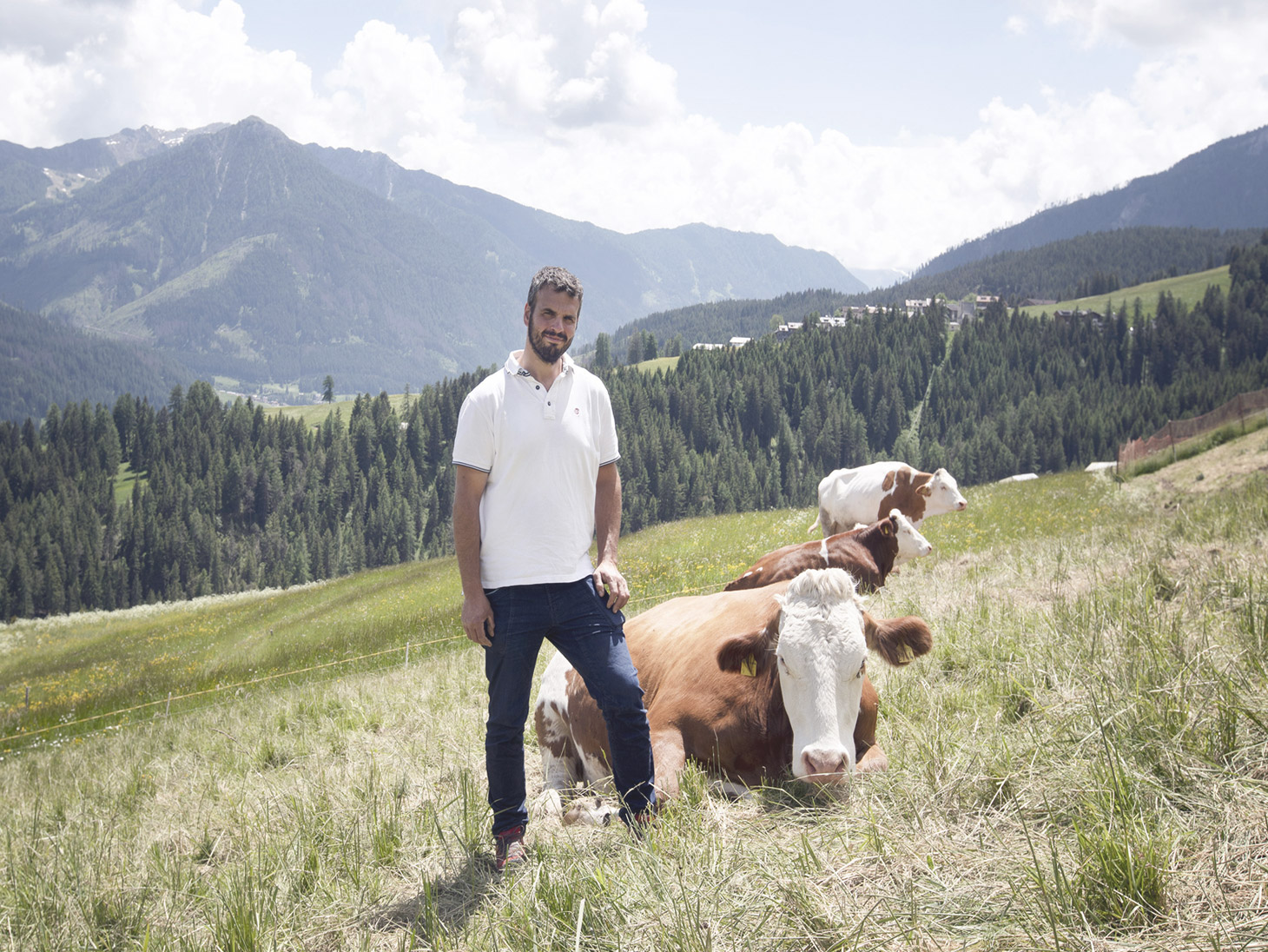
40 years old, a wife, two children and many projects. Not just dreams, but concrete projects, which one by one have been placed to the ground. Because Filippo Rasom has clear ideas: this was the feeling we had when we met him first. Resolute, clear minded, brilliant in knowing how to grasp the signals from the market. We have only started working together for a year, but the steps we have taken are already very interesting.
And not only because Laurin is an alluring cheese - raw milk, melting texture, washed rind - which responds to a precise request of our market, but also due to Filippo's ability to organise the documentation, the packaging, the logistics, to meet the needs of a channel different from the one he was used to. Working with Valsana - our producers are well aware of this - involves a lot of "troubles": forms to fill in, documentary controls, requirements to be respected, quality inspections and continuous products monitoring.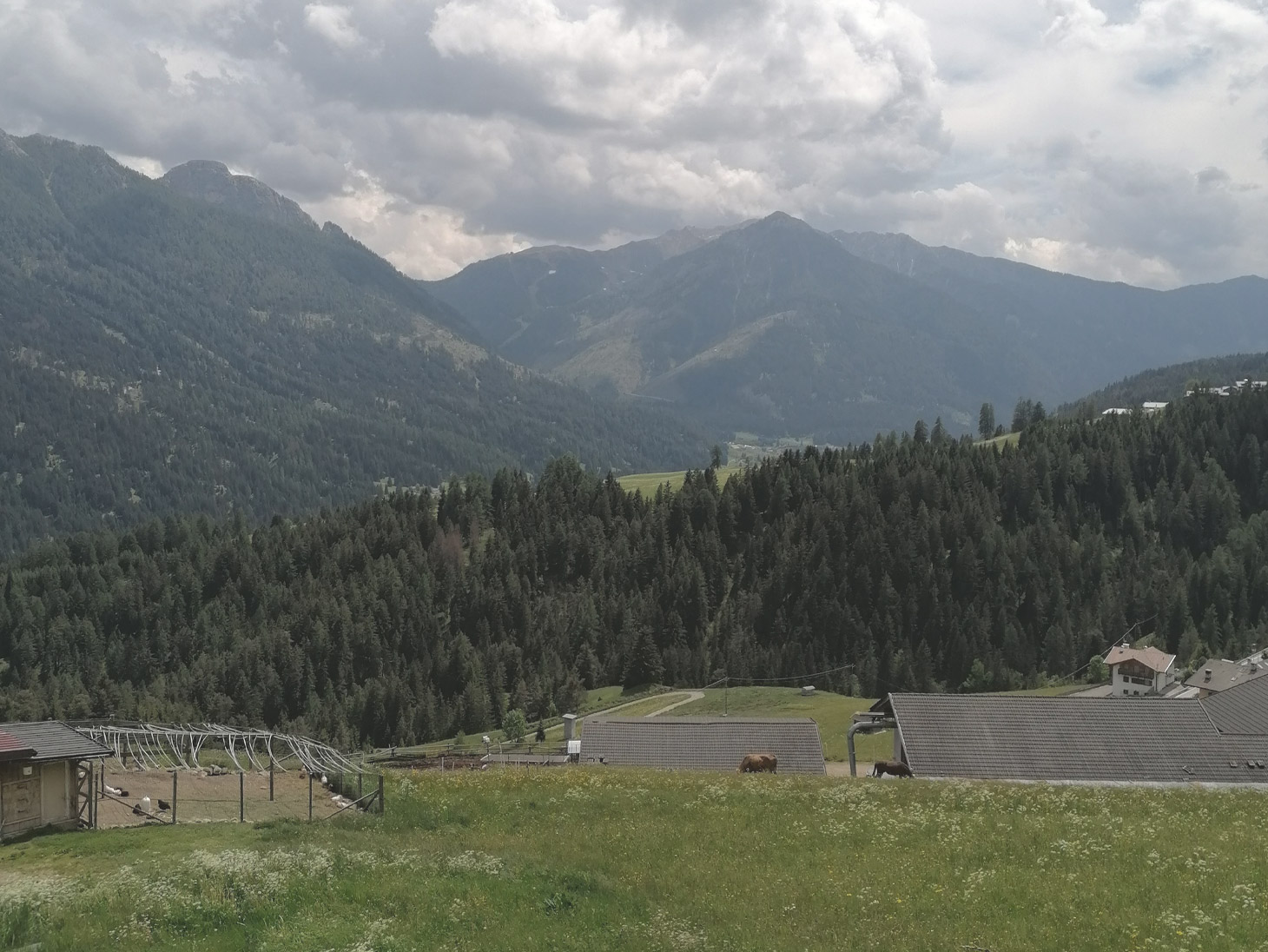
Filippo decided to found his company as soon as he finished the studies: his grandfather already had a stable but it was inherited by Filippo's uncle. Filippo got some land, including the one where the stable, the dairy and the farmhouse are today. "There were only meadows - he says - but we didn't give up: in 2006 we presented the project and in 2008 we built the stable and the barn and bought the first 18 cows".
"At the beginning we have been selling just the milk but since we started we had in mind to gradually diversify the business. So in 2014 we created the agritourism, which Elisa, my wife, takes care of". The Agritur Majon da Mont is a cuddle: nine rooms furnished with an extreme attention to details, a breakfast room with a wonderful window overlooking a breathtaking valley, a simple menu, but with a few dishes capable of telling the territory.
"In 2017 I started transforming my milk in an external dairy, then in 2019 we built an expansion of the stable and finally in 2021 we were able to build our own dairy and started transforming the milk directly in our farm. Today, in addition to our milk, we transform also the one of another small farm, partner of the Catinaccio Dairy, the Weiss Farm: they have on lactation 25 cows of Pezzata Rossa breed, raised in a stable with fixed stalls and summer pasture. Luigi and Monica takes care of the farm, while their daughters Nicole and Sabrina handle the hospitality".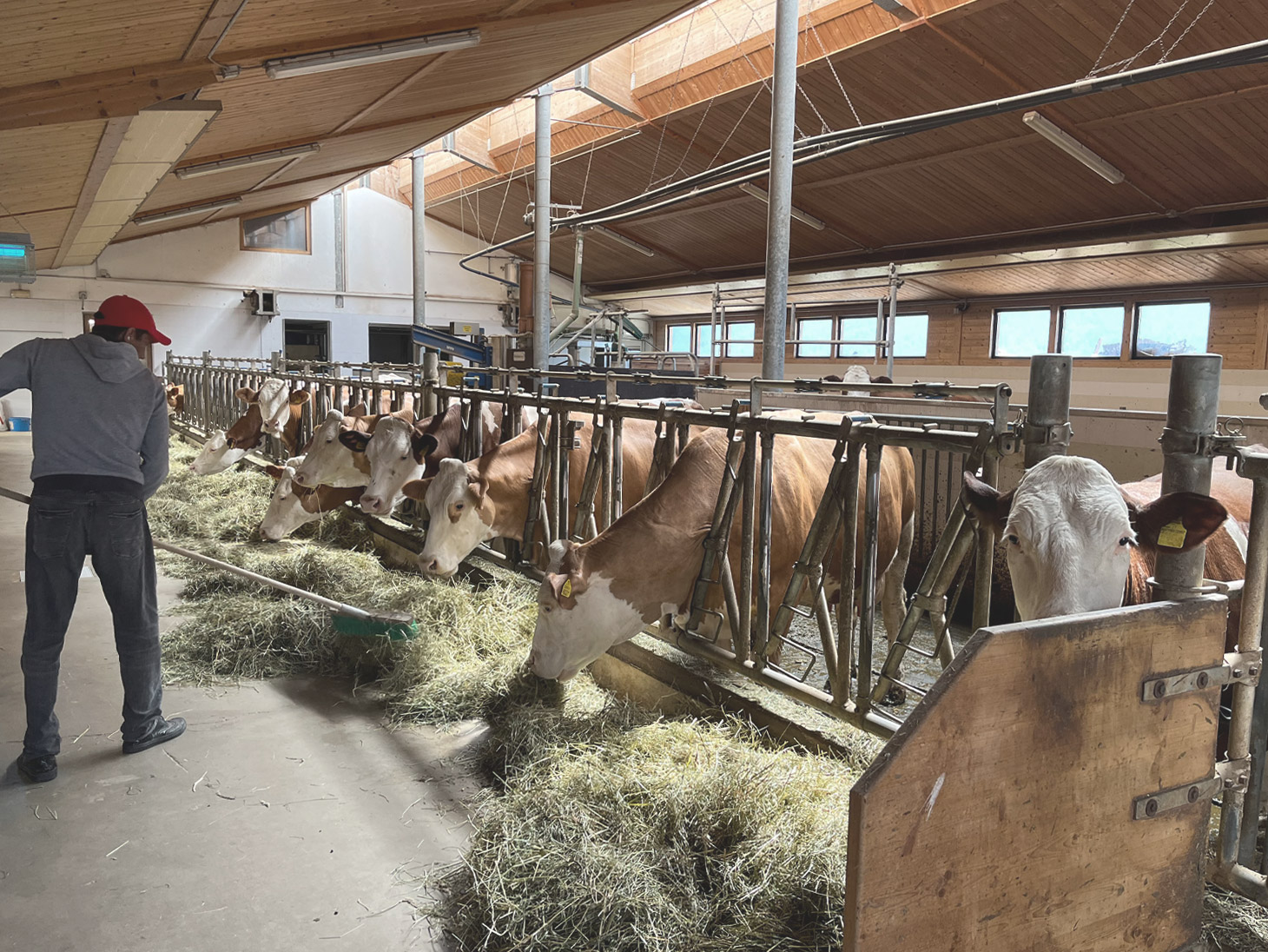
Caseificio Catinaccio is a small dairy organised in one single room overlooking the stable: the milk is collected with a milking robot, an investment made thanks to the Industry 4.0 project. A choice that goes in the direction of animal welfare: the cows are milked according to their needs and this prevents mastitis and the stress associated with waiting for milking.
But the use of the milking robot also allows the farmer to monitor the health of the animals in real time, through parameters collected both on the animal and on the milk, and to have more time to devote to the management of the barn and the dairy.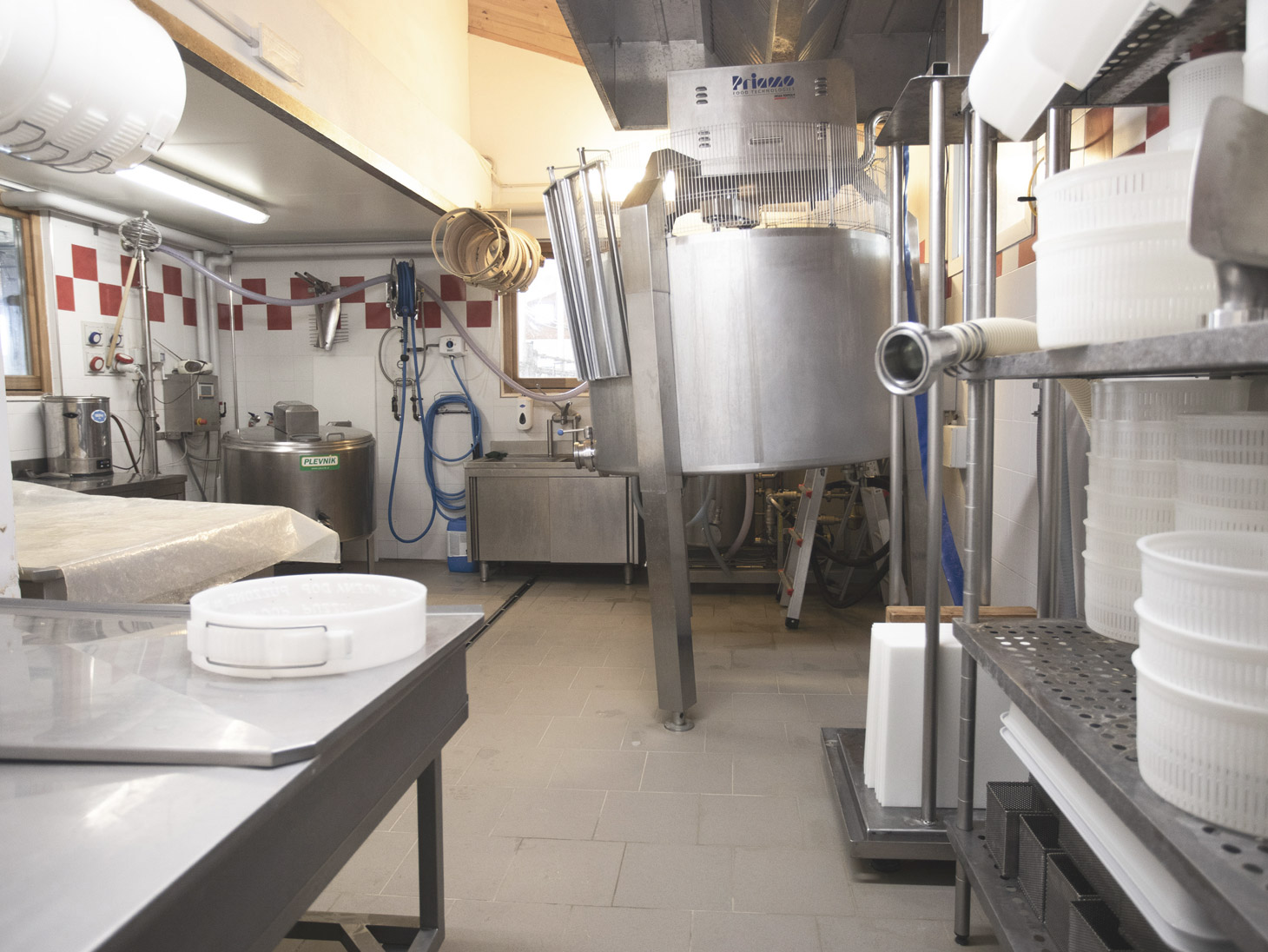
"The choice of using technology implies the need to specialise the personnel: if I have to move away for few days, I need to leave in the farm a person able to know exactly how the robot and its app work. It makes me smile to think that so many farmers have criticised us because this is not the traditional milking system. But I personally believe that technology can be a great help: the link with the territory and with tradition is given by the grass that our cows eat every day, by processing raw milk, by using milk starter instead of industrial ferments, by the maturing environment; certainly not from the milking system, which instead allows us to save a lot of time".
Filippo gets up at 4 a.m. to manage the stable, but afterwards he takes some time for himself, e.g. to go skiing for an hour in winter, one of his passions; to take Sofia, his little daugher, to the ski races - she practices ski competition - or to take to school Martin, the little pest of the house. "It is important to be able to find out some time to do something else, even a trip - this year we went to the United States for a few days - to get out of the comfort zone, escape from the usual context, see other realities and bring home new ideas" - told us Elisa, Filippo's wife.
But that's not all. During our visit the works for a biogas plant - the first in Val di Fassa - had just begun, with the main aim of becoming energetically autonomous, but also with the awareness that the biogas digester has two more advantages: it transforms the waste from the stable into organic nitrogen which does not damage the turf and eliminates 90% of the smell.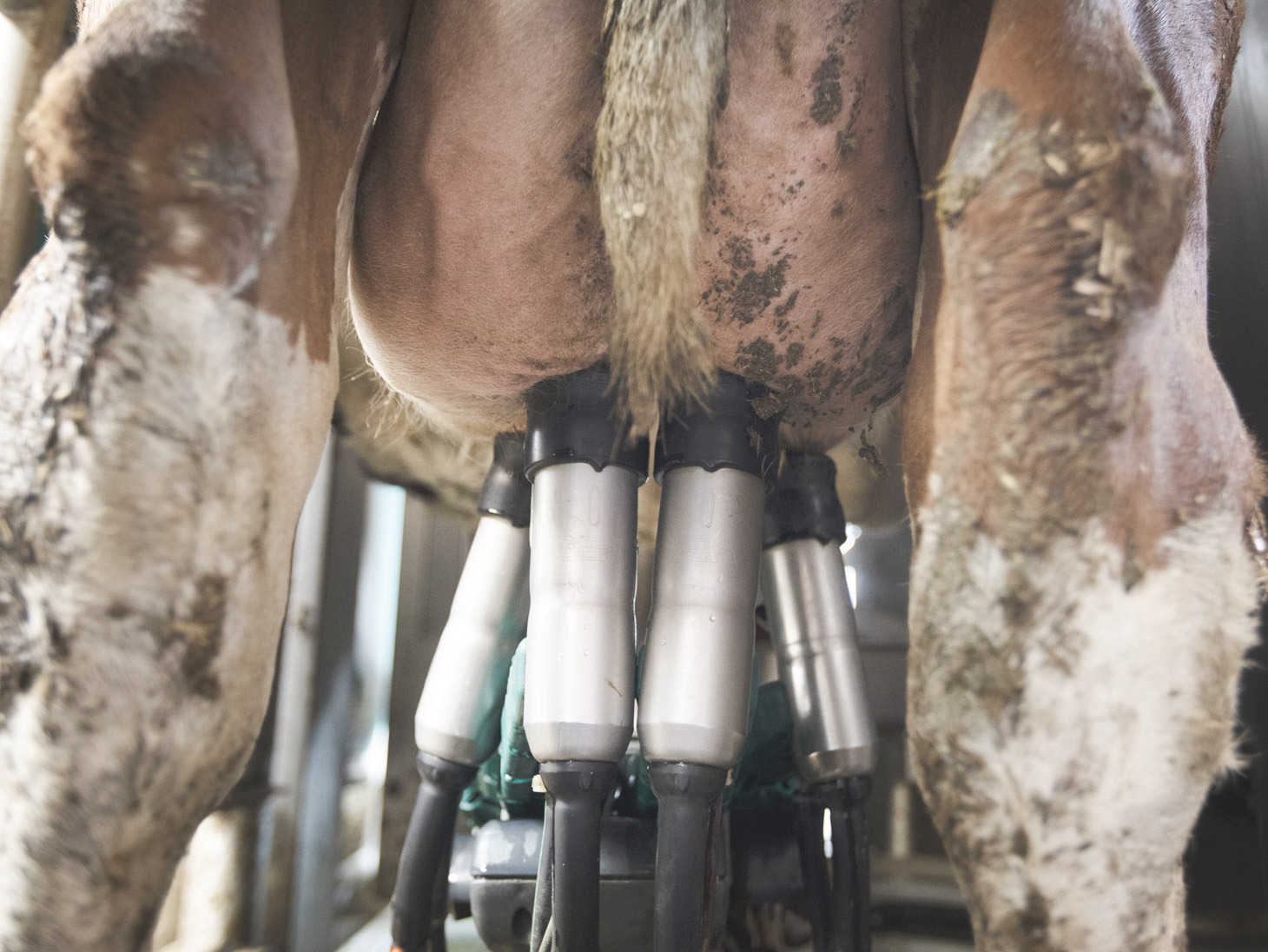
Let's visit the stable! The first thing we notice is the scent of the hay, a good indicator of both the level of hygiene and the type of feeding of the cows. Filippo reproaches us: "Close the door otherwise the girls will get cold". His girls are about thirty cows of the Pezzata Rossa breed, a rather rustic and docile dual purpose breed. Filippo calls them by name and recognizes them one by one: he introduces us to the oldest of the group, Helene, with a dark coat, 13 years old, another indicator that the animals are healthy.
The free stall-style barn houses 35 mattresses and straw cubicles dedicated to the dairy cattle: on the farm today there are 30 cows on lactation as well as about 20 heifers. Calves, heifers and cows on dry period are free to graze during summer, while the cows on lactation live in the stable.
"The company does not have enough pastures around the stable to be able to feed outside the cows on lactation. Only the heifers graze around the barn, and only those over one year of age, because around here live about 40 wolves.
In addition to the 8 hectares of pasture, we have 38 hectares of mountain meadows between 1350 and 1800 meters above sea level, which are mown to produce quality hay: pre-dried on the field and finished to dry in the barn above the stable, according to a traditional local method.
The cows on lactation always have hay available, and also fresh grass in the manger in June and July, but they also receive a feed-based supplementation: on average they eat 20-30 kg of hay and locally bought alfalfa a day, 6-7 kg of grains (barley, soybeans and corn) distributed throughout the day to avoid acidosis, no silage.
In the company we practise the artificial insemination, respecting the natural cycles of the animals. Two months before giving birth, the cows entering the dry period are moved to the mountain pastures, "on holiday" we say. The calves are immediately separated from the mother but are fed for 10 days with mother's milk, then for 2 months with milk from the stable and subsequently with hay and fodder.
While we are visiting the barn we realize that Ernestina has entered the milking robot. We immediately run there with our photographer to try to steal some shots.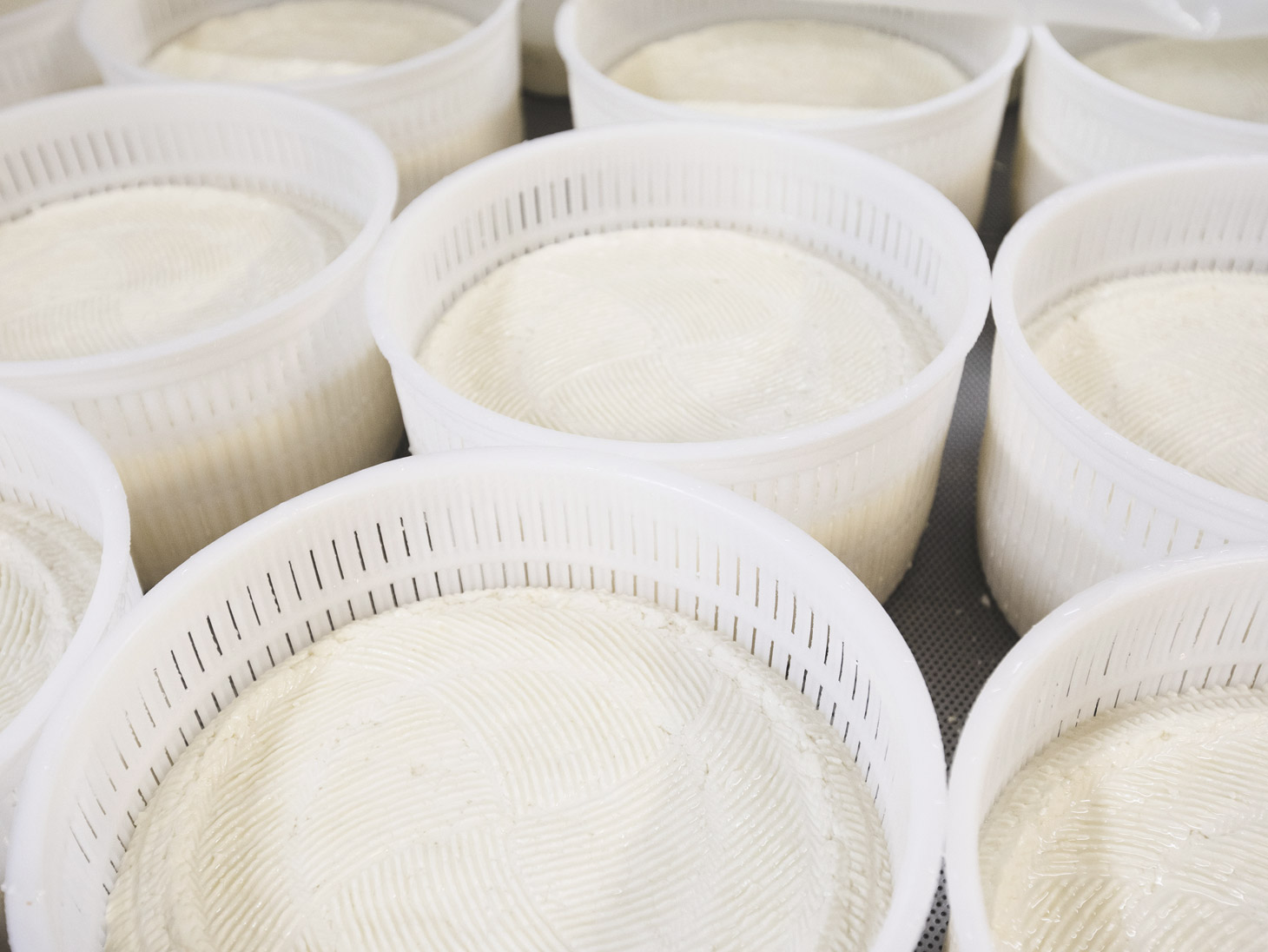
The robot first of all cleans the nipples, then automatically attaches to the cows and starts the milking process. We take the opportunity to let Filippo explain us how it works and what information are collected, available both on the milking station monitor and in the app on his mobile phone.
The milk is automatically collected and stored in refrigerated tanks. The average daily production is around 28 liters per head, for a total of 8-9 quintals of milk per day.
In addition to the milk from his own stable, Filippo also processes the milk from the Weiss farm, which is located a few hundred meters away, still in Vigo di Fassa: about 400 liters of milk a day obtained from about twenty cows, still of Pezzata Rossa breed, raised with the same approach.
We move down to the maturing cells, where we find the Laurin, a cheese we have learned to appreciate in the recent months.
A whole raw milk cheese, with 40-45% fat - mainly saturated fats, omega 3 and omega 6 thanks to the type of diet of the cows - and raw paste: once the curd is cut, the heating temperature does not exceed 42°C. During aging, which lasts at least 60-70 days, the rind is washed weekly only with hot water.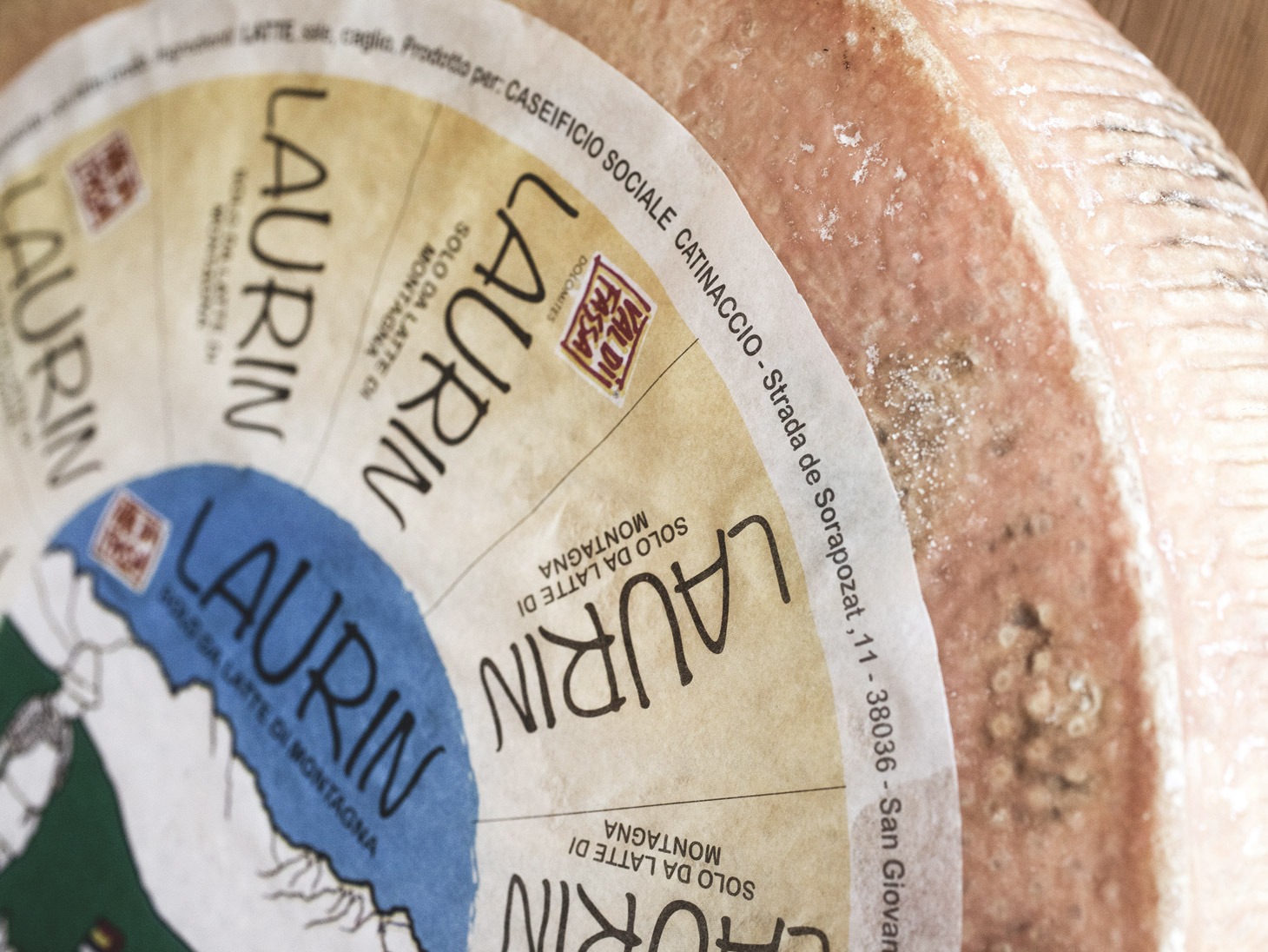
In our last visit to Caseificio Catinaccio with a group of international clients, in mid-June, we also receive two good news.
The first. Filippo has stopped using selected ferments and has begun producing his own milk starter: we welcome this information with enthusiasm, it is a further step to give even more personality to the cheese, linking it to the territory, to the stable, to the context of production.
The second. The first wheel of Puzzone di Moena DOP, produced on the 3rd of March, is finally ready to be opened. We are very excited when we cut it together: the 90 days of maturation required by the disciplinary have passed, but in our opinion it still needs to mature a little more, even if it is already very interesting. We tormented Filippo for weeks to encourage him in this project, we agree to do some additional tasting tests to agree on the seasoning.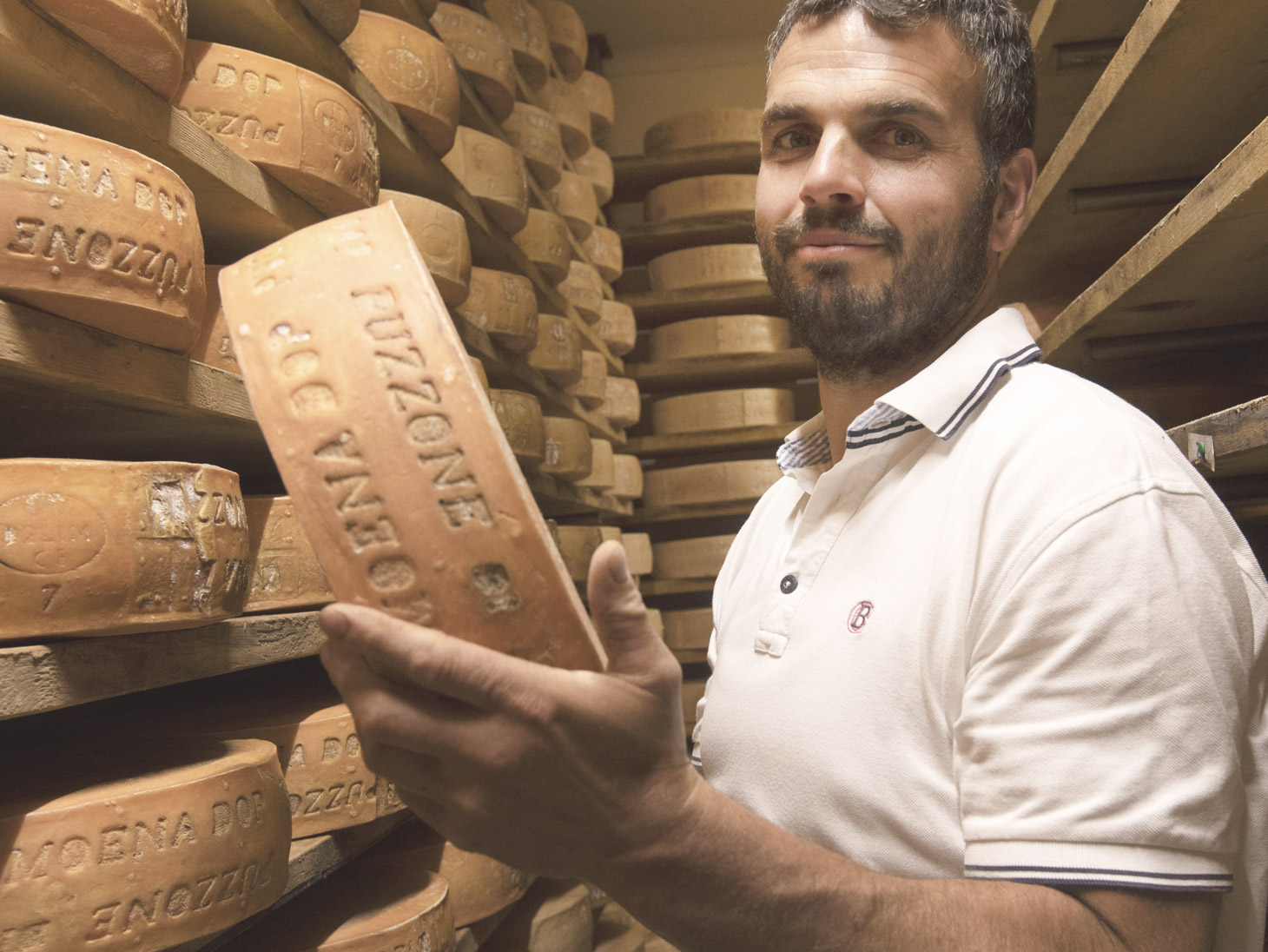
His Puzzone is what we carry in our memory, fragrant, with well-distributed holes, not too moist in the crust, perfectly recognizable. A small production, currently 12 wheels a week, which we are sure will stand out!
We are very happy when we meet producers like Filippo, capable of blending vision and passion, technology and tradition, to give birth to authentic cheeses, anchored to the territory of origin. It is something that gives us hope, for a conscious agriculture that reconciles entrepreneurship and ethics. Well done Filippo!



